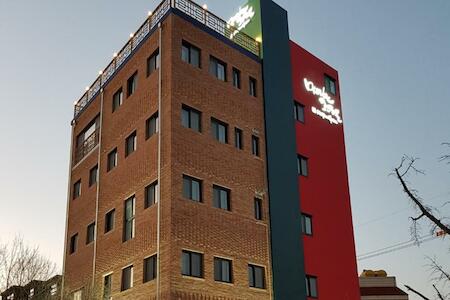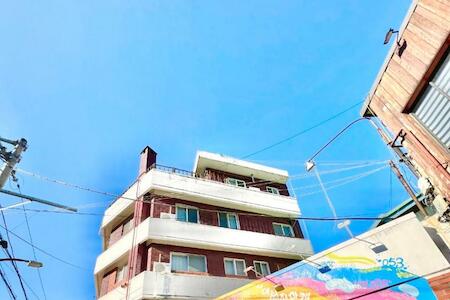Looking for budget stays in Daegu? This section is designed to save you time, money, and unnecessary stress. We've got insider tips to help you find affordable hostels and the cheapest places to stay in Daegu.

Daegu (formerly Taegu) is the fourth largest city in southeastern South Korea. It is a metropolitan city with tons of fashion venues, museums, and theaters, yet also has many mountains and parks to offer to nature-lovers. In the past, it was known as a textile city and served as the founding location of Samsung electronics company. Nowadays, its subtropical climate ensures that it produces some of the best apples and oriental melons. Unfortunately, its strong economy from the 1980s has gone downhill, but there is an effort to reverse that decline; today, Daegu is forging ahead by being a leader in the fashion industry.
Daegu’s Jung-gu district, or downtown, is a central fashion hub where shoppers can find some of the latest trends on display in the many clothing shops and department stores. With an underground mall and a main shopping strip, Dongseongno Street, the downtown area is the life of the party. It also is one of the best places to find a hostel or other accommodation in Daegu.
If you are looking specifically for a hostel in Daegu, look for the word “guesthouse” in the downtown district and you are likely to encounter numerous options. A typical Daegu hostel is centrally located, both close to attractions as well as public transportation. Hosts tend to be helpful and willing to communicate in English to the best of their abilities. The dormitory beds and bathroom facilities are usually very clean. Even though no special security measures seem to be the norm, the hostels tend to be located in safe areas. Since most are in high-rise buildings, there may be a lot of stairs to climb. The average hostel bed cost is in the median range.
After you have settled into a hostel in Daegu, you can take the subway to get around easily. Once you have seen the bustling downtown shopping district as well as the many museums and theaters, you could visit one of the mountains. Mount Apsan offers a fun gondola ride up to its summit; alternately, you could hike one of the trails up to the top. From there, you have a panoramic view of Apsan Park and its environs. You can also explore Buddhist temples within the park. In case all the walking creates an appetite for a good meal, there are several restaurants onsite where you could feed your rumbling belly.
On another day, you might like to take a longer trip to Haeinsa, located within Gayasan National Park in nearby Gyeongnam. This UNESCO World Heritage Site, which dates back to the year 802, is a Buddhist temple containing the Tripitaka Koreana, a series of thirteenth century Buddhist scriptures written on 81,258 woodblocks.
Written by Travel Expert Daegu
 Jakob Lombardi
Jakob Lombardi
